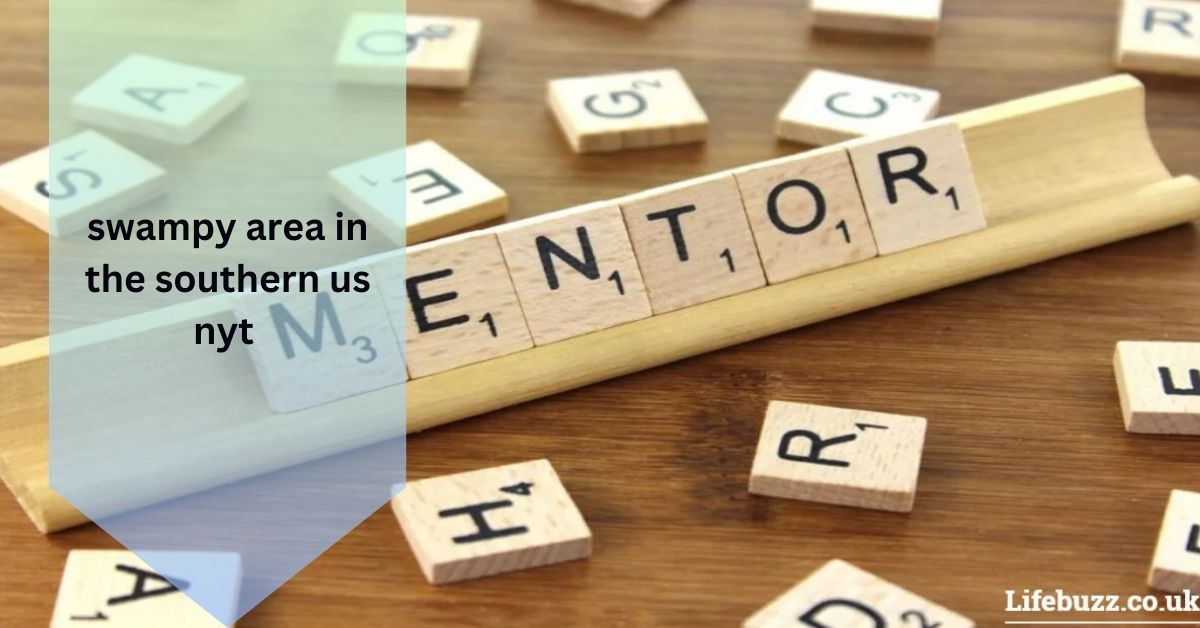Swampy Area In The Southern Us NYT – A Comprehensive Guide!
The New York Times crossword often includes clues about Southern US swampy areas, such as the Everglades and Louisiana bayous, highlighting their ecological importance and climate-related challenges.
Introduction to the ‘Swampy Area in the Southern US NYT’ Crossword:
The New York Times Crossword puzzle is renowned for its challenging and diverse clues, often incorporating a wide range of topics from everyday life to specialized knowledge. One such clue that may pique the interest of geography and nature enthusiasts is “Swampy Area in the Southern US.”
This clue encapsulates both a geographical and environmental concept, making it a fascinating subject for crossword solvers. In this article, we will explore this clue in detail, uncovering the significance of swampy regions in the Southern United States, their ecological importance, and their representation in crossword puzzles.
Related NYT Mini Crossword Answers:

For crossword aficionados who enjoy the NYT Mini Crossword, clues related to geographical features like swamps often appear. The Mini Crossword’s concise format challenges solvers with clues that range from straightforward to complex.
For the clue “Swampy Area in the Southern US,” related Mini Crossword answers might include terms like “Bayou” or “Everglades,” reflecting the region’s distinctive wetland features. Exploring recent Mini Crosswords can provide additional context and reinforce your understanding of these terms.
Clue & Answer Definitions:
Understanding the clue “Swampy Area in the Southern US” involves recognizing the key characteristics of the region’s wetlands. Here are some common answers and their definitions:
- Everglades: This vast and unique wetland area located in Florida is renowned for its diverse ecosystem, which includes sawgrass marshes, mangroves, and cypress swamps. The Everglades are not only a significant ecological zone but also a critical component of the Southern US’s natural heritage.
- Bayou: Found predominantly in Louisiana, bayous are slow-moving or stagnant water bodies that are often associated with swampy and marshy areas. The term “bayou” can describe a variety of wetland features, including marshes and swampy streams.
Impact of Climate on Swamp Ecosystems:
Swamp ecosystems are highly sensitive to climate variations. Changes in climate can significantly affect these regions, influencing their water levels, biodiversity, and overall health. Understanding these impacts is crucial for both conservation efforts and crossword puzzle enthusiasts seeking deeper knowledge about the Southern US’s natural features.
Effects of Temperature and Precipitation Changes:
Climate change introduces several challenges to swamp ecosystems:
- Temperature Increases: Rising temperatures can lead to higher evaporation rates, reducing water levels in swamps. This can negatively impact aquatic plants and animals that depend on stable water conditions for survival.
- Precipitation Variability: Changes in precipitation patterns can cause extreme weather conditions, such as prolonged droughts or intense flooding. Both scenarios can disrupt the balance of swamp ecosystems, affecting plant growth, animal habitats, and overall ecosystem functionality.
Also Read: Dorothy Bowles Ford – Exploring Life and Legacy!
Climate-Related Challenges Facing Swamps:
The Southern US swamps face several climate-related challenges, including:
- Increased Flooding: Intense and frequent rainfall can lead to flooding, which may alter swamp landscapes and damage habitats. Flooding can also spread pollutants and invasive species, further threatening the delicate balance of these ecosystems.
- Drought Conditions: Extended periods of drought can lower water levels, stress native plant species, and disrupt the habitat of aquatic wildlife. Drought conditions can also exacerbate issues related to soil erosion and habitat degradation.
Historical Usage in Crossword Puzzles:

The inclusion of geographical and environmental terms in crossword puzzles has a long history. The “Swampy Area in the Southern US” clue reflects a broader tradition of incorporating regional and natural features into puzzles. Historical usage often highlights how crossword constructors use clues to educate solvers about different aspects of geography and nature, providing a more engaging and informative experience.
Tips for Solving the Swampy Area in the Southern US NYT Crossword Puzzle:
To effectively tackle the clue “Swampy Area in the Southern US” in the NYT Crossword puzzle, follow these tips:
- Familiarize Yourself with Southern Geography: Understanding the key swampy regions in the Southern US can provide valuable clues. Knowledge of areas like the Everglades or bayous can help narrow down possible answers.
- Use Crossword Databases: Online crossword puzzle databases and resources can offer hints and solutions for similar clues. Reviewing past puzzles with related clues can provide insights and improve your solving strategy.
Possible Answers to the Clue:
When tackling the crossword clue “Swampy Area in the Southern US,” consider potential answers that reflect the region’s key swampy areas. The Everglades, for instance, is a prime example of a vast and ecologically important swamp in Florida. Its expansive wetlands and rich biodiversity make it a prominent feature in discussions about Southern US swamps.
The term “Bayou” is another likely answer, capturing the essence of slow-moving, swampy water bodies found particularly in Louisiana. Both terms represent significant aspects of the Southern US’s natural landscape and can help solvers identify the correct answer to the crossword clue.
Future Outlook for Swampy Areas in the Southern US:

Predictions for Ecosystem Changes:
Swampy ecosystems in the Southern US are predicted to undergo significant changes due to environmental shifts. As temperatures rise, some species may migrate to cooler areas, while others face extinction. Altered precipitation patterns could lead to more frequent droughts or floods, impacting water levels and nutrient distribution. Invasive species may gain a foothold, competing with native flora and fauna.
These changes will likely affect food chains and ecosystem services, such as water filtration and carbon storage. Understanding these dynamics is crucial for developing effective conservation strategies to protect the ecological integrity of these unique landscapes.
Also Read: Jessica Dorrell – A Comprehensive Overview!
Potential Conservation Initiatives:
Conservation initiatives are crucial to protecting the swampy areas of the Southern US amid growing environmental pressures. Restoration projects aim to rejuvenate these ecosystems by restoring natural water flows, reintroducing native species, and managing invasive species. Collaboration among government agencies, environmental organizations, and local communities is essential for the success of these efforts.
Innovative strategies, such as creating protected areas and implementing sustainable land-use practices, are being explored to ensure the long-term health of these wetlands. Public education and engagement play a vital role in building support for conservation efforts, promoting stewardship, and influencing policy changes.
FAQ’s:
1. What are some examples of swampy areas in the Southern US?
Some notable swampy areas in the Southern US include the Everglades in Florida and the bayous of Louisiana, both of which are renowned for their rich biodiversity and ecological importance.
2. How does climate change affect Southern US swamps?
Climate change affects Southern US swamps by altering temperatures and precipitation patterns, leading to changes in water levels, increased flooding, drought conditions, and shifts in biodiversity.
3. Why are the Everglades significant?
The Everglades is a vast and unique wetland ecosystem in Florida, known for its diverse flora and fauna. It plays a crucial role in water filtration, carbon storage, and supporting a wide range of wildlife.
4. What challenges do Southern US swamps face?
Southern US swamps face challenges such as increased flooding, prolonged droughts, habitat loss, invasive species, and pollution, all of which threaten their ecological balance and integrity.
5. How can we protect swampy areas in the Southern US?
Protecting swampy areas involves conservation initiatives like restoring natural water flows, reintroducing native species, creating protected areas, and engaging communities in sustainable practices and education.
Conclusion:
Swampy areas in the Southern US, like the Everglades and bayous, are crucial ecosystems that support diverse wildlife and provide essential ecological services. Despite facing significant threats from climate change and human activity, conservation efforts focused on restoration and sustainable practices offer hope for their preservation. By raising awareness and fostering collaboration, we can protect these unique landscapes for future generations and maintain their ecological balance.
Read More:














Post Comment